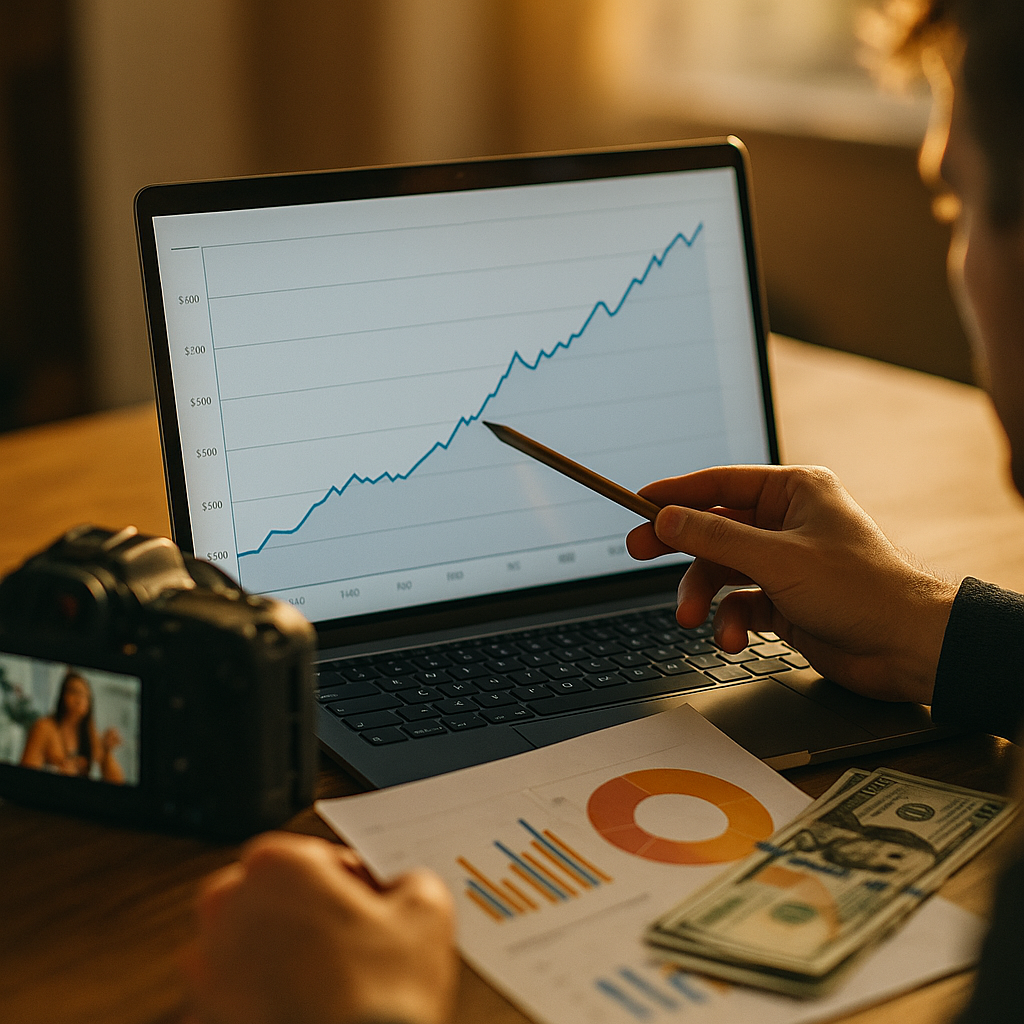Understanding the point of diminishing returns in influencer spend is crucial for optimizing marketing strategies in 2025. As influencer budgets grow, marketers must identify when additional investment ceases to deliver significant value. Let’s explore a real-world case study that reveals how brands can maximize ROI without overspending on influencers.
Influencer Budget Optimization: Establishing Baselines
Before determining the point of diminishing returns, it is essential to establish performance baselines. Most brands begin by setting clear influencer marketing goals—whether driving brand awareness, generating sales, or fostering engagement. Accurate cost tracking and value mapping create the foundation for meaningful comparison.
A retail brand in 2025, “EcoThreads,” began their influencer campaign by categorizing spend across nano, micro, and macro-influencers. They compared cost-per-engagement and conversion rates for each tier in initial pilot campaigns. For maximum clarity, they used industry benchmarks, third-party analytics, and first-party data to cross-verify performance.
Incremental ROI in Influencer Marketing: Measuring Returns
As influencer investment rises, incremental return on investment (ROI) becomes the primary metric. Instead of focusing solely on gross metrics, EcoThreads assessed how each additional dollar impacted outcomes like engagement, reach, and revenue.
- Stage 1: Early spend generated significant increases in reach and engagement per dollar.
- Stage 2: Intermediate spend maintained high growth rates but with slightly fewer new conversions per extra dollar.
- Stage 3: Late-stage spend (“saturation”) saw engagement plateau, and the cost per conversion climbed steadily.
Using tools like Google Analytics and influencer ROI platforms, EcoThreads identified when incremental gains from additional spend dropped below their minimum ROI threshold. This defined their first “point of diminishing returns.”
Influencer Spend Saturation Point: Recognizing the Signs
How do you know you’ve hit influencer spend saturation? Several signals point to the tipping point:
- Engagement rates level off across campaigns, even as budget increases
- Brand searches and direct traffic metrics stop climbing
- Cost per acquisition (CPA) and cost per engagement (CPE) rise sharply
- Customer feedback and survey results do not improve with more exposure
In EcoThreads’ case, they saw meaningful declines after quadrupling their original budget. Despite doubling reach with celebrity influencers, only a marginal number of new customers converted. Internal surveys signaled minimal improvement in brand recall, proving further spend would be less efficient.
Data-Driven Influencer Strategy: Dynamic Adjustment
Maximizing influencer marketing returns in 2025 requires continuous data-driven adjustment. EcoThreads developed a dynamic dashboard integrating real-time influencer analytics, Google Search trends, and direct e-commerce results.
When the dashboard flagged rising CPAs and declining unique visitors per influencer, the team reallocated budget back toward nano and micro-influencers, who showed stronger engagement per dollar. They fine-tuned campaign messaging and content types, testing short-form versus long-form collaborations for optimal outcomes.
EcoThreads also diversified platforms, pivoting from saturated Instagram campaigns to emerging channels like TikTok Shop and YouTube Shorts, finding untapped audiences delivering better ROI.
Best Practices: Avoiding Overinvestment in Influencer Campaigns
Want to avoid overspending on influencers and get the most from every marketing dollar? Here are proven best practices from top-performing brands:
- Set clear KPIs. Define what success looks like—for example, cost per lead, sales lift, or repeat customer rate.
- Benchmark performance regularly. Compare historical and current performance, adjusting spend as needed.
- Use tiered influencer strategies. Test combinations of nano, micro, and macro-influencers; optimize based on measured outcomes.
- Leverage technology for real-time feedback. Employ analytics platforms that alert you as soon as spend outpaces returns.
- Be willing to pause or pivot. If performance drops, don’t hesitate to pause spend or experiment with new content formats and platforms.
Applying these strategies keeps influencer programs agile, scalable, and profitable in a competitive market.
Strategic Takeaways: Maximizing Influencer ROI in 2025
The real lesson from EcoThreads’ experience is clear: smarter, flexible spending outperforms simply increasing budget. Regularly monitoring the point of diminishing returns in influencer spend helps brands optimize engagement and avoid wasted budget in 2025’s fast-changing digital landscape.
FAQs
-
What does “point of diminishing returns” mean in influencer spending?
The point of diminishing returns in influencer spend is when additional budget produces much smaller increases in engagement, conversions, or brand awareness than before—indicating it’s no longer cost-effective to increase spend.
-
How can brands identify when they’ve reached the point of diminishing returns?
Brands should monitor key metrics such as engagement rate, CPA, and conversion growth per dollar. If these plateau or decline as spending increases, it signals diminishing returns and suggests re-evaluation.
-
Is it better to work with nano, micro, or macro influencers to maximize ROI?
It depends on campaign goals and audience fit. In many cases, nano and micro-influencers offer higher engagement rates and lower costs per engagement, but a mixed strategy often yields the best balance.
-
How often should influencer campaign performance be reviewed?
For optimal results in 2025, review at least monthly and adjust budgets dynamically as soon as key performance indicators show reduced incremental returns or rising CPAs.
-
What are common pitfalls in influencer marketing budget allocation?
Frequent pitfalls include overcommitting to mega-influencers, neglecting to monitor incremental ROI, using outdated metrics, and failing to pivot strategy when returns decrease.
In summary, identifying your brand’s influencer spend saturation point is essential for efficient marketing. Monitor real-time performance, adjust channels and partnerships, and remain agile. This ensures each influencer dollar in 2025 delivers sustainable, measurable growth.
